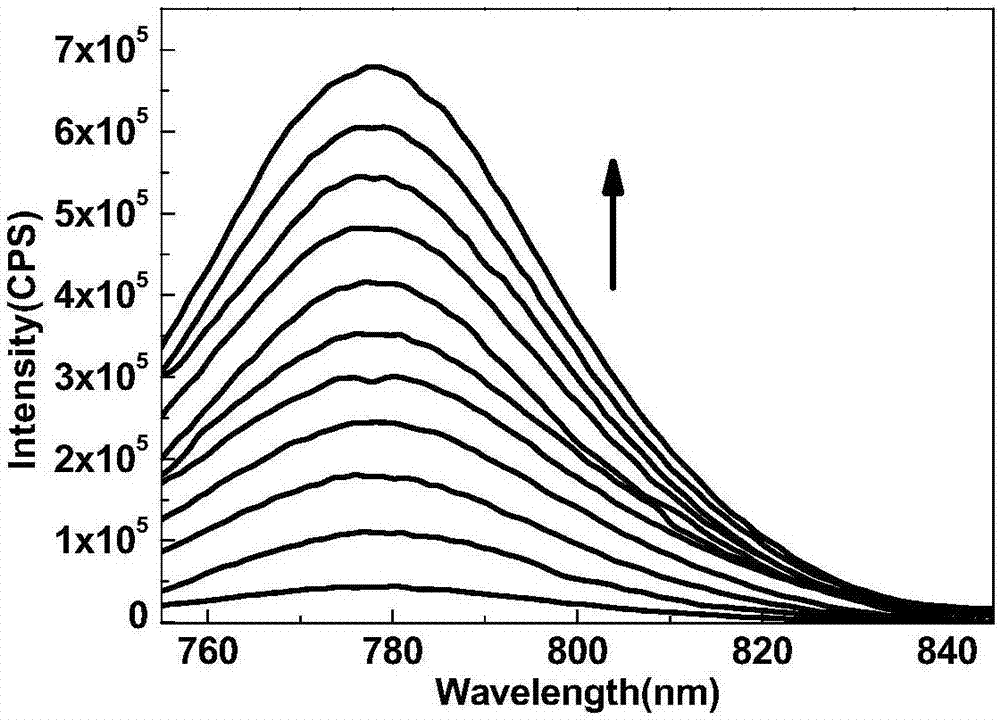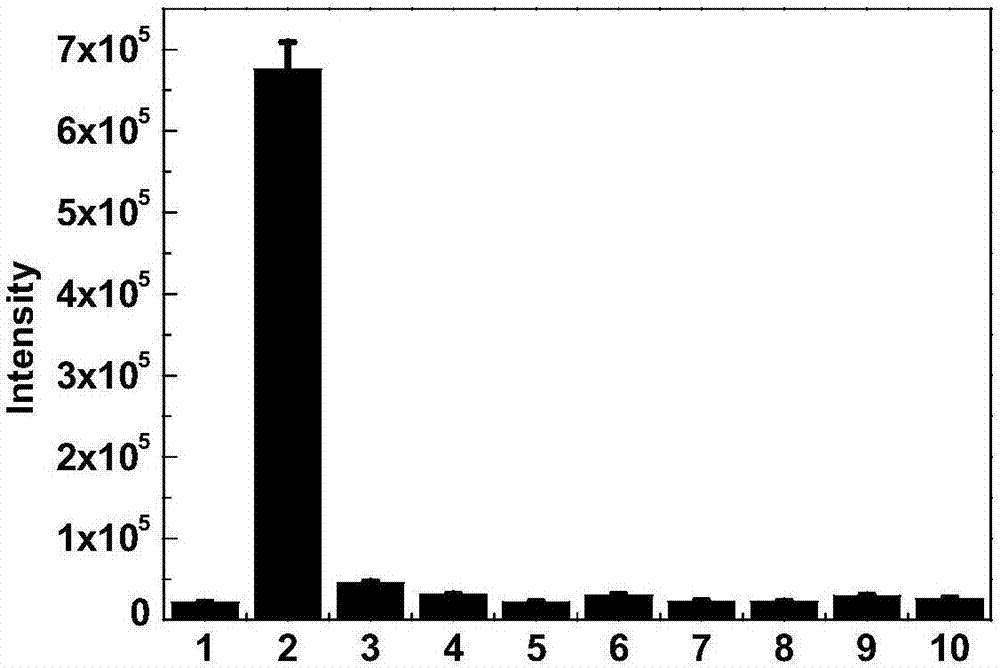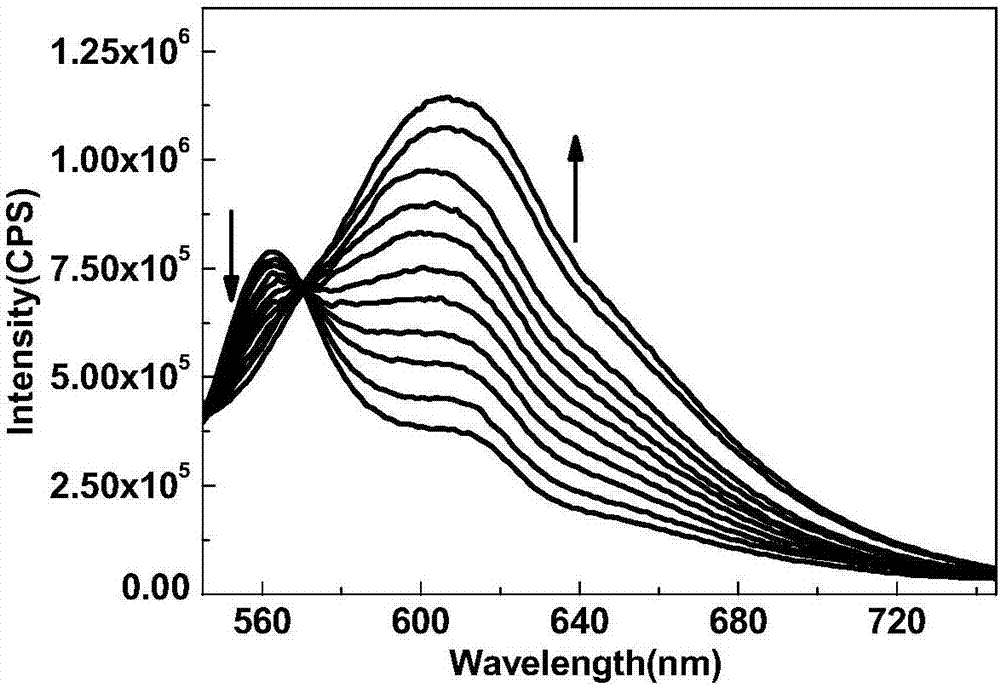Cyanine-based organic compounds and intermediates thereof, and application of cyanine-based organic compounds and intermediates thereof
A technology of organic compounds and fluorescent probes, applied in the field of fluorescent probes, can solve the problems of complex operation methods and large instruments, and achieve the effects of wide application range, reduced interference, and short response time
- Summary
- Abstract
- Description
- Claims
- Application Information
AI Technical Summary
Problems solved by technology
Method used
Image
Examples
Embodiment 1
[0029] Example 1. Preparation of cyanine-based organic compounds:
specific Embodiment
[0030] The cyanine fluorophore shown in compound I is commercially available, and then different detection groups are modified at the corresponding positions of the fluorophore to obtain the corresponding cyanine compound. Specific examples are as follows:
[0031] (1) Preparation of compound II
[0032] Cyanine fluorophore (0.255g, 0.4mmol) was dissolved in 20ml of methanol, Na 2 S (0.03g, 0.4mmol) was dissolved in 1ml of water, and at room temperature, 1ml of Na 2S solution was added dropwise to a round bottom flask, and refluxed for 30 min under the protection of argon. Wash with excess saturated potassium iodide solution, then extract with dichloromethane, and spin evaporate to obtain a crude product. The crude product was purified by column chromatography using ethyl acetate and methanol (6:1 / v / v) as the eluent to obtain 0.146 g (0.229 mmol) of compound II as a green solid with a yield of 57.3%.
[0033] Compound II: 1 H NMR (500MHz, CDCl 3 -D 1 )δ(ppm):0.937-0.982...
Embodiment 2
[0040] The prepared compound I was used as a probe in water system, simulated physiological environment and intracellular for O 2 ·- and Hg 2+ To simulate physiological conditions, the following experiments were all carried out under the condition of pH=7.4 (HEPES buffer solution, the concentration was 10 mM), and the probe concentration was 10 μM.
[0041] The compound I prepared above is used as a probe pair O 2 ·- the response to:
[0042] pH was controlled with HEPES buffer solution. Add 10 μM compound I to each 10ml colorimetric tube, and then add 0-10 μM different concentrations of O 2 ·- , then dilute to 10ml with 10mM HEPES, shake the solution evenly, and after equilibrating for 10min, pour the working solution in each colorimetric tube into a fluorescent dish to measure the fluorescence spectrum. Fluorescence intensity was measured at 755-845nm (see figure 1 ),Such as figure 1 shown. The above compound I can be used to realize the O in vivo 2 ·- detection,...
PUM
 Login to View More
Login to View More Abstract
Description
Claims
Application Information
 Login to View More
Login to View More - R&D
- Intellectual Property
- Life Sciences
- Materials
- Tech Scout
- Unparalleled Data Quality
- Higher Quality Content
- 60% Fewer Hallucinations
Browse by: Latest US Patents, China's latest patents, Technical Efficacy Thesaurus, Application Domain, Technology Topic, Popular Technical Reports.
© 2025 PatSnap. All rights reserved.Legal|Privacy policy|Modern Slavery Act Transparency Statement|Sitemap|About US| Contact US: help@patsnap.com



